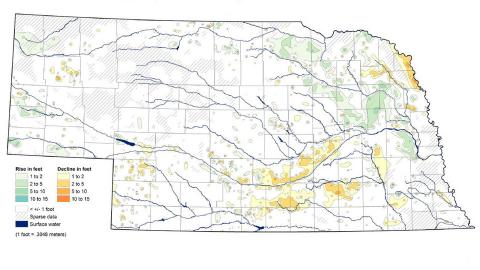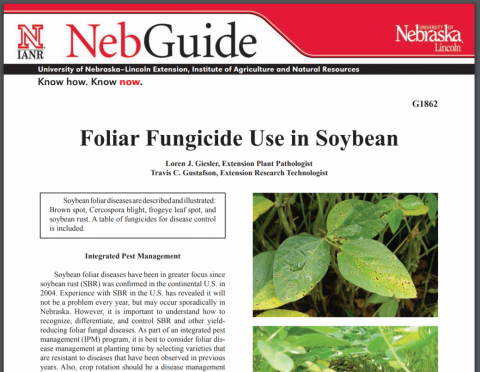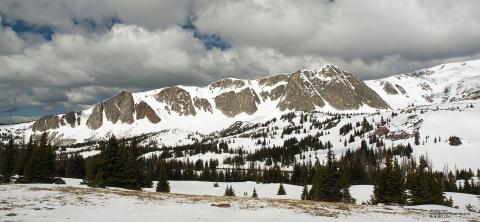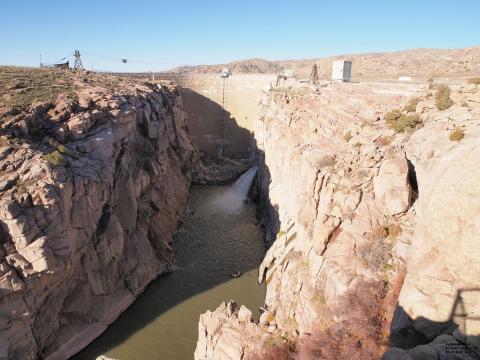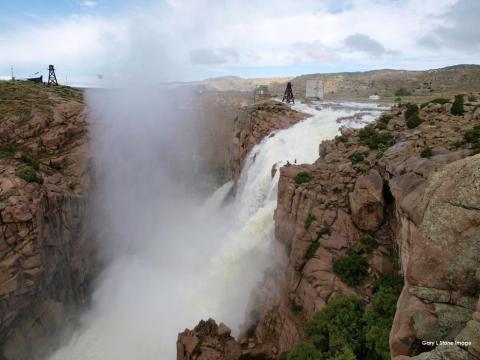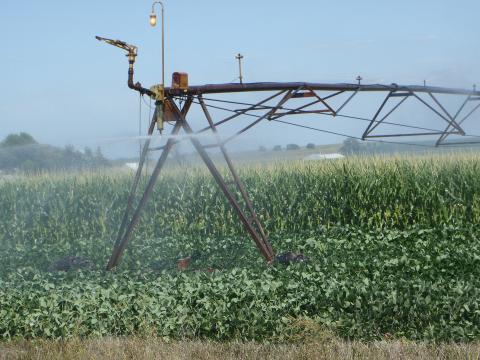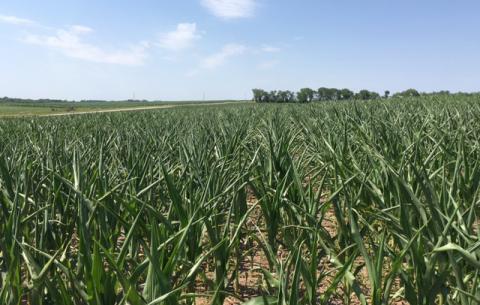Nebraska Continues To See Modest Groundwater Decline
March 15, 2018
Based on tests in 5,200 water wells across the state, Nebraska has seen a modest decline in groundwater levels in the last five years. A new university report tracks well levels in 1-year, 5-year, 10-year, and pre-irrigation increments to identify trends.
New Publications from Nebraska Extension
August 3, 2017
New agricultural publications from Nebraska Extension include ones on fungicides for soybeans, a primer on cover crops, on-farm research results, agriculture in the Nebraska Panhandle, and ones on estimating soil water deep percolation or run-off.
Using SoyWater to Schedule Irrigation and Monitor Soybean Stages to Guide Decision-Making
June 26, 2017
SoyWater is an online tool that, based on the information you input, can provide timely, field-specific irrigation recommendations to increase irrigation efficiency.
North Platte River Basin Water Update
June 1, 2017
After good precipitation over the winter and spring, most of the reservoirs in the North Platte River basin in Wyoming are at or near capacity with more snowmelt/runoff still expected.
North Platte River Water Update — US Bureau of Reclamation
April 21, 2017
North Platte River water operations and deliveries are expected to be normal for the 2017 growing season with an expected demand of 1.1 million acre-feet, according to a US Bureau of Reclamation forecast presented at the University of Nebraska Panhandle Research and Extension Center in Scottsbluff April 19.
Status of North Platte River Water Reservoirs
February 14, 2017
I usually start reporting on river flows and water reservoirs affecting western Nebraska in early May, but with recent national news about the spillway at the Oroville Dam in California, you may be wondering about the status of snowpack water content and the reservoir levels along the North Platte River in Wyoming.
Technologies for Irrigation Management Field Day Sept. 8
August 24, 2016
Nebraska Extension and MidPlains Ag are collaborating on a Technologies for Irrigation Management Field Day near Elgin on Thursday, Sept. 8.
Impacts of Extreme Heat Stress and Increased Soil Temperature on Plant Growth and Development
June 21, 2016
Both corn and soybean are susceptible to extreme heat (and water) stress during early vegetative stages as well as later critical growth stages (pollination for corn and flowering for soybean). Extreme heat stress can reduce plant photosynthetic and transpiration efficiencies and negatively impact plant root development, which collectively can negatively impact yield. The author recommends that during an extended heat wave (air temperature equal to or greater than 90 F for 7-10 days), applying 0.25-0.40 inch of water can be very beneficial.
